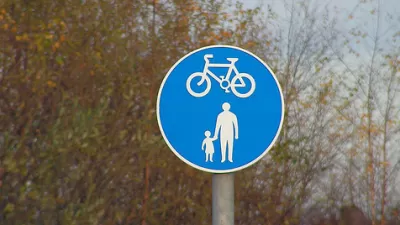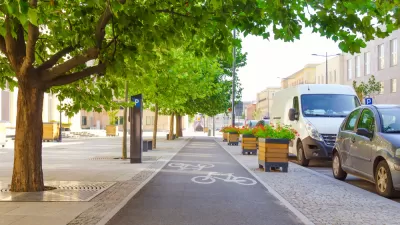An equity strategist offers advice on creating safe streets programs that address systemic racism.

Naomi Doerner, a consultant who helps bike and pedestrian advocates develop racial justice plans, gives Streetsblog her take on the blind spots in the planning community.
After addressing organizational culture and community outreach, Doerner points to Vision Zero as an example of a campaign hampered by a failure to analyze its relationship to systemic racism.
While its goal of eliminating traffic deaths is unassailable, Doerner suggests that the Vision Zero campaign has been implemented in a "top-down" manner that relies too much on police enforcement.
The problem, she says, is that the impacts of heavier policing are felt profoundly differently across socially disparate communities—and don't necessarily result in improved safety:
When you look at what is happening in communities of color in cities where we have this broken windows policing and you overlay this Vision Zero enforcement, there are concerns that it could lead to this kind of profiling or traffic stops.
Police are more likely to stop black and Latino drivers for minor infractions, Streetsblog points out; more troublingly, a recent study found this to be an important factor in the disproportionately high number of police killings of black and Latino people.
"This particular Vision Zero analysis had not been done by the advocacy community," Doerner notes. She continues:
I think that a lot of that really does have to do with the fact that a lot of the organized bike and walk community are not comprised of people of color. There are a very high number of people of color who bike and walk. But generally, they’re not really helping shape policy or the campaigns.
It doesn’t mean that you throw out everything about Vision Zero. It just means we have to use analysis tools to figure out who could very well be negatively impacted and develop alternatives.
FULL STORY: Naomi Doerner on How Street Safety Advocates Can Support Racial Justice

Maui's Vacation Rental Debate Turns Ugly
Verbal attacks, misinformation campaigns and fistfights plague a high-stakes debate to convert thousands of vacation rentals into long-term housing.

Planetizen Federal Action Tracker
A weekly monitor of how Trump’s orders and actions are impacting planners and planning in America.

In Urban Planning, AI Prompting Could be the New Design Thinking
Creativity has long been key to great urban design. What if we see AI as our new creative partner?

King County Supportive Housing Program Offers Hope for Unhoused Residents
The county is taking a ‘Housing First’ approach that prioritizes getting people into housing, then offering wraparound supportive services.

Researchers Use AI to Get Clearer Picture of US Housing
Analysts are using artificial intelligence to supercharge their research by allowing them to comb through data faster. Though these AI tools can be error prone, they save time and housing researchers are optimistic about the future.

Making Shared Micromobility More Inclusive
Cities and shared mobility system operators can do more to include people with disabilities in planning and operations, per a new report.
Urban Design for Planners 1: Software Tools
This six-course series explores essential urban design concepts using open source software and equips planners with the tools they need to participate fully in the urban design process.
Planning for Universal Design
Learn the tools for implementing Universal Design in planning regulations.
planning NEXT
Appalachian Highlands Housing Partners
Mpact (founded as Rail~Volution)
City of Camden Redevelopment Agency
City of Astoria
City of Portland
City of Laramie





























